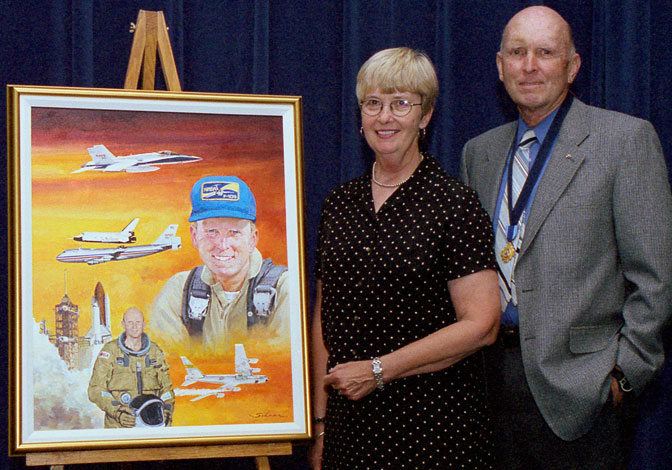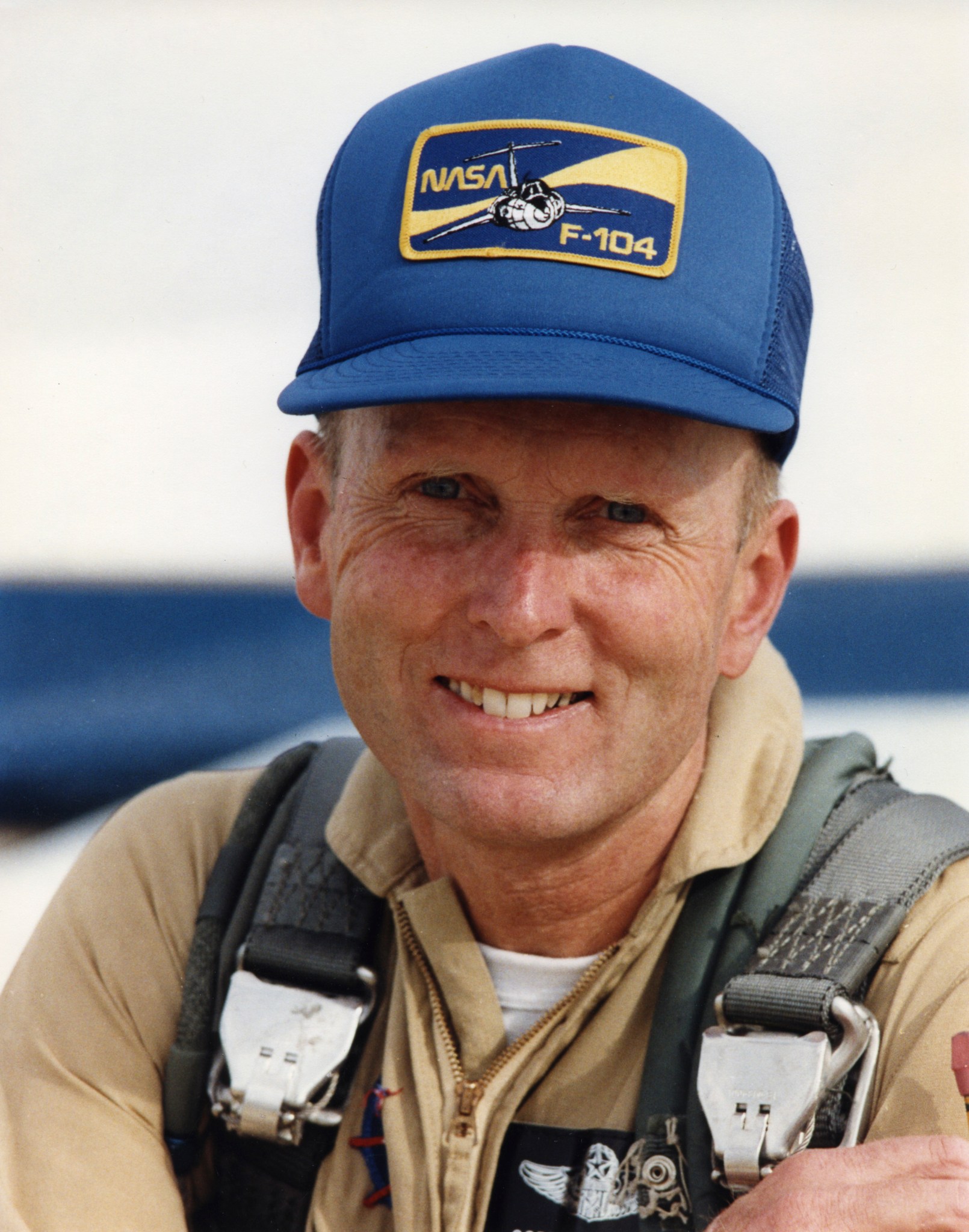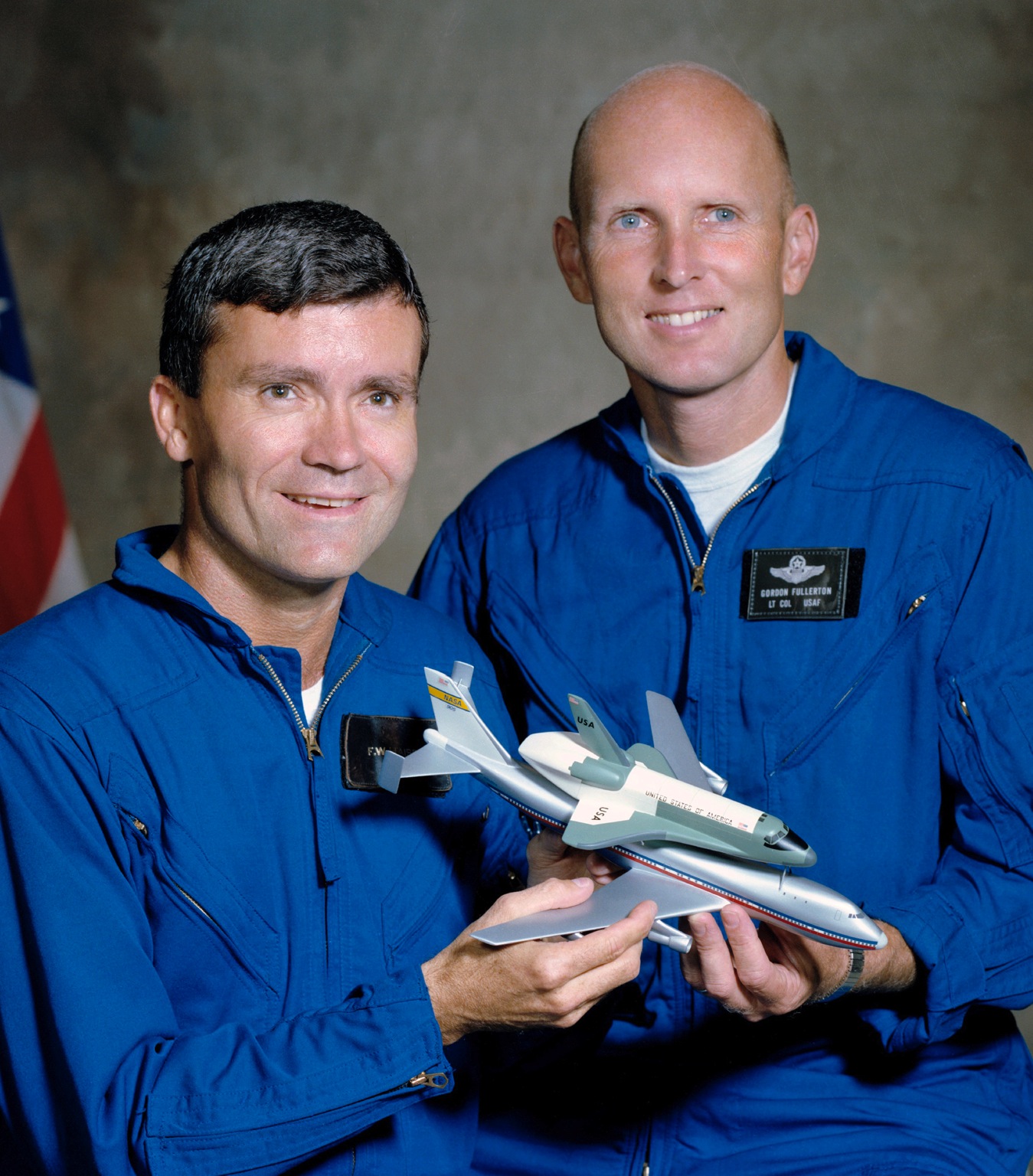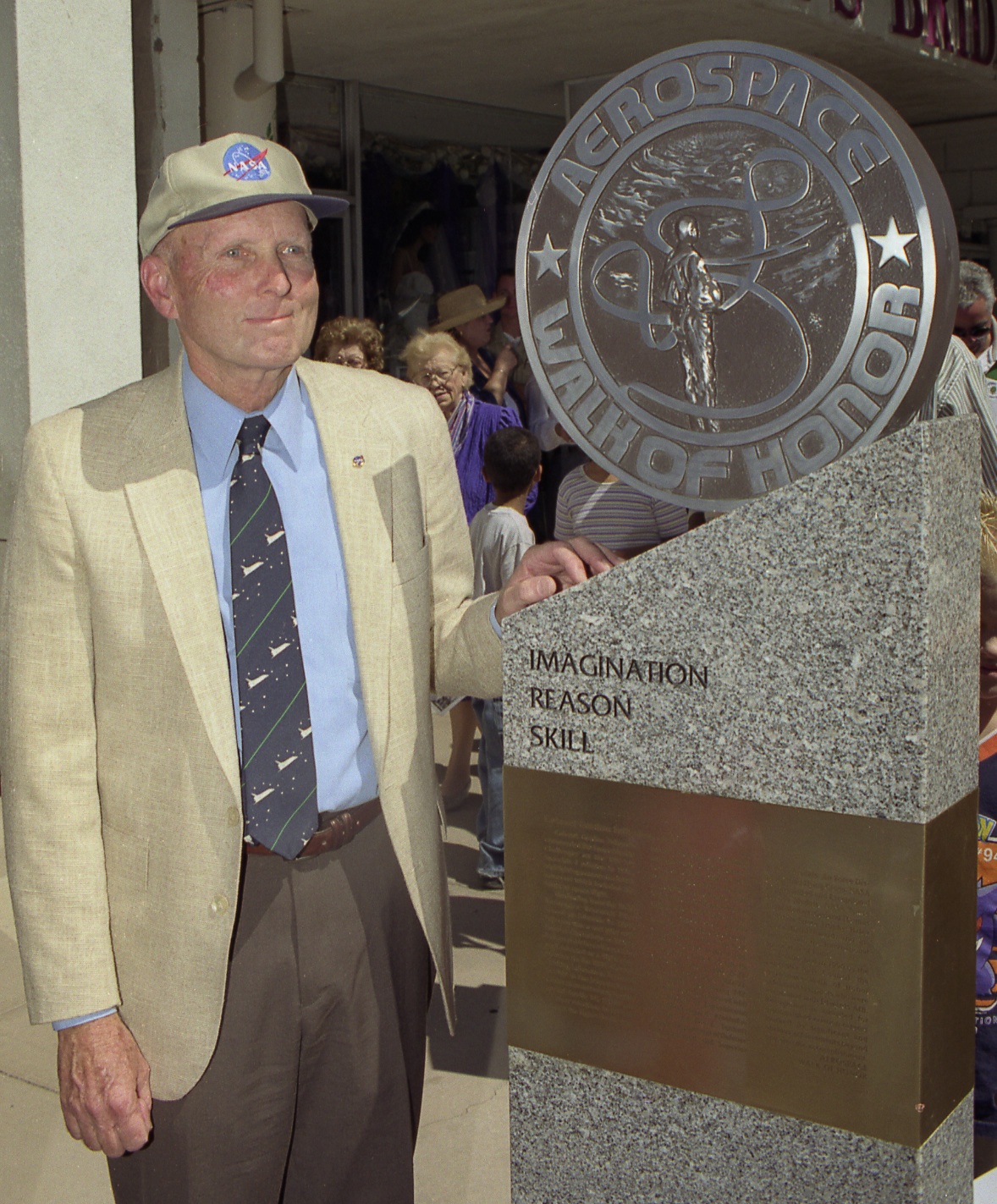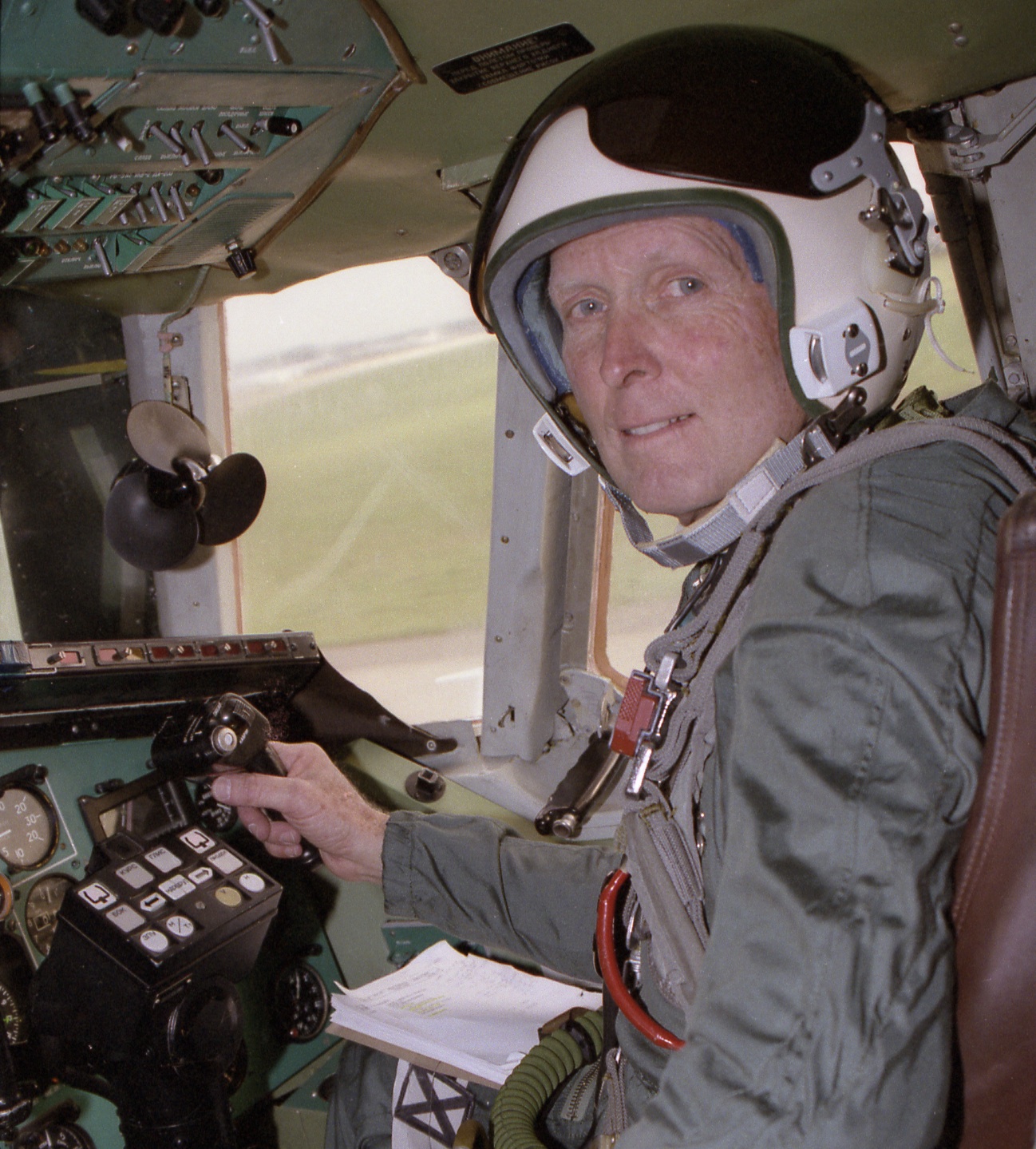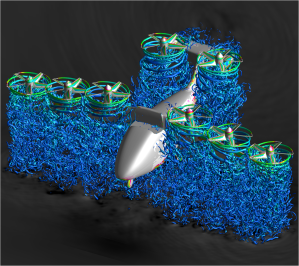Dryden employees, family, and friends celebrated a life well lived August 26, 2013 as they honored the late NASA astronaut and research pilot Gordon Fullerton—or to those who knew him, Gordo—at a Celebration of Gordo’s Life.
Family and friends described Fullerton as a humble family man, who was very kind, unflappable, smart, and who had a great sense of humor. He died August 21 at age 76. Fullerton had flown in 135 different types of aircraft and logged more than 16,000 flight hours during his flying career. His resume also included two space shuttle missions, including one as commander.
Dryden center director David McBride said Fullerton inspired people to pursue careers in science, technology, engineering, and mathematics with his work on programs like Apollo, the space shuttle, and accomplishments as an Air Force test pilot and a NASA Dryden research pilot.
“Those activities were accomplished by great engineering,” McBride said. “They were accomplished by courageous and very skilled crews and Gordo was one of those who made it work. Gordo was one of those few who took the risk that inspired the next generation. Thank you, Gordo.”
In addition, McBride read a statement from NASA administrator Charlie Bolden about Fullerton.
“Gordo was a mainstay of NASA for many years,” Bolden said. His support of the Apollo program, the shuttle program, and his accomplishments in breaking new ground in aeronautics will not be forgotten. He will be missed, but his legacy will continue to thrive. We will build on all that he gave to NASA and our nation’s space and aeronautics programs.”
Jim Ross, Dryden’s photo chief, recalled flying with Fullerton.
“Every flight with Gordo was a once in a lifetime opportunity,” he said. “I had 57 once-in-a-lifetime opportunities with him.”
Ross recalled his first flight. He was in a G-suit and feeling like Tom Cruise in Top Gun.
“Gordo had this puzzled look on his face and then he said, ‘We don’t use a G-suit in the T-38.’ I embarrassed myself. I had no idea how the whole thing worked,” Ross explained.
He didn’t fly with Fullerton until later and the first flight was rough for the first-time flier.
“The first person in the locker room after my flight was Gordo. He was excited and asked how the flight went. I had my back toward him and he could tell when I turned around that it didn’t go well. It took two months before I flew again. Consensus of all the pilots was you can’t base your ability to fly from one flight. All of them encouraged me and I eventually flew with Gordo.”
Because Ross and camera colleagues Carla Thomas and Lori Losey didn’t have a broad base of experience with pilots and airplanes, Fullerton worked to boost their knowledge. One flight made Ross anxious.
“I am having a heart attack, grab the stick and fly,” Fullerton told Ross. “You fly with old pilots so this could really happen.”
“It felt like I was the one having a heart attack,” Ross recalled, “but I had a great time flying with Gordo.”
Karol “Bo” Bobko, who served as an astronaut with Fullerton in the U.S. Air Force Manned Orbiting Laboratory program in 1966 and later became a space shuttle astronaut with NASA, shared his recollections of Fullerton, commenting that Gordo was unflappable during jungle survival training.
In a potentially life-threatening position following a thunderstorm that made a river swell and a whirlpool formed and threatened them, Fullerton looked at him and said, “I don’t think this is survival training anymore.”
The two men went deep into the river to escape the whirlpool and lived to tell the tale, Bobko said.
“Gordo would have told you that story, but he wouldn’t tell you about his mission on Space Shuttle Challenger when it lost one engine on launch, but made it to orbit,” Bobko said. “If he was here, I’d wish him 17,000 mph (the speed required to achieve orbit). Now that he’s on the other side, I wish him Godspeed.”
Larry Schilling, former Dryden associate center director for operations, offered another view of Fullerton, who after retirement was active with family and friends until a stroke a few years into retirement challenged him. The challenges were great, but so too was Fullerton’s spirit. He didn’t feel sorry for himself and worked hard to regain his body and mind. His sense of humor returned and he enjoyed his grandchildren and frequent visits from friends.
Unfortunately, that progress began slowed and his condition worsened. But still, Fullerton maintained his sense of humor calling the Schillings “the Pesos” when he began to study Spanish.
“That shows real depth of character after the stroke to fight to recover. He loved his family and they loved him,” Schilling said.
Many will remember Fullerton as a hero, a family man and a great pilot. Aviation Week writer Guy Norris explained that Fullerton also was down to Earth.
“He was a nice guy who always had time for a chat with me at Society of Experimental Test Pilot meetings. He was the first astronaut I ever talked to who could truly describe the awesome experience of space flight in an accessible way,” he said.
Former Dryden center director Ken Szalai said Fullerton was “one of the best of the best.” As such, he instantly gave credibility to projects he supported. One example Szalai cited was the Convair 990 work at Dryden that dealt with excessive brake and tire wear on the shuttles that resulted in changes that benefited the program.
Other examples included the Propulsion Controlled Aircraft that looked at using only propulsion to compensate for damaged aerodynamic controls on an aircraft and supersonic transport work that involved working with the Russians, becoming one of just two Americans to ever fly the Russian supersonic Tu-144.
He was kind, humble, and smart. He was top tier at everything he did. You don’t replace a Gordon Fullerton.
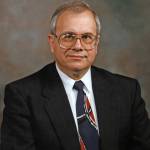
Ken Szalai
Former NASA Dryden Flight Research Center Director
Fullerton’s son Andy and daughter Molly Mansubi offered their assessments of Gordo as well.
Molly said best advice Dad gave her was “Love what you do and never work a day in your life,” she recalled.
Fullerton’s widow Marie spoke best of the man who was her greatest love and best friend as she was his through 45 years of marriage.
She recalled the day they met at a party. She was a nurse and he was a test pilot who drove a Porsche, which she said she didn’t know what that was then. “You must be Gordy,” she said. “Gordon is the name,” he replied. They dated every day after that first meeting and later married in Ohio.
“He loved his 17 years at Johnson Space Center and he loved and respected all of you here. When he came home and something on the plane didn’t work, he knew it would be OK and safe to fly (when he returned to the cockpit). He had only kind things to say about Dryden and the environment here. You were his other family,” she said.
Gordon Fullerton also was a believer in education, she added.
“He loved to talk about space and flying. He never turned down an opportunity to talk to children unless he really couldn’t make it,” Marie Fullerton said.
The event fittingly ended with a flyby and “missing man” pull-up of a NASA F-15 aircraft.
If you heard a sonic boom on Aug. 21 and didn’t see a plane, that was him. Runway 22 in heaven was preparing for his arrival—once he finished some supersonic barrel rolls, of course.



























